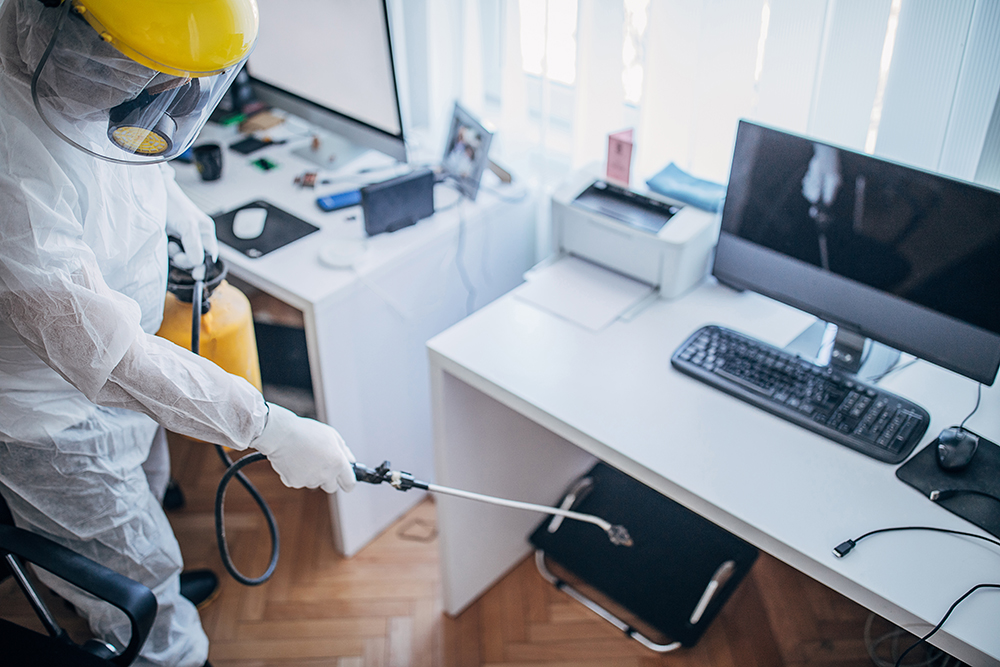One undeniable consequence of the Covid-19 pandemic is that people everywhere have become more concerned about cleanliness and safety in their living and work environments. In commercial and public sectors, this also means that facility managers must rely on the knowledge and dependability of their commercial cleaning services to provide increased levels of cleanliness and disinfection.
Cleanliness has entered a new era of scientific innovation and scrutiny. And now, more than ever, it’s important to know the definitions of various cleaning methods and terminologies, because they each indicate different levels of health and safety protection. Cleaning, sanitizing, disinfecting—these terms are widely used in commercial cleaning and janitorial services industries, but often they are not fully understood. The following is a summary of their definitions:
- Cleaning is defined as using soap (or detergent) and water to physically remove visible dirt and debris from surfaces by the process of scrubbing, washing and rinsing. Cleaning does not necessarily kill germs, but it lowers their numbers and therefore reduces the risk of infection.
- Sanitizing reduces the number of bacteria on surfaces to a safe level as defined by public health standards or requirements. Although sanitizing reduces the number of bacteria it is generally ineffective against viruses and fungus.
- Disinfecting can destroy or inactivate both bacteria and viruses on surfaces.
Without a doubt, proper cleaning methods improve the health of indoor environments because in the process, allergens and microorganisms are removed from surfaces. Cleaning alone, however, does not effectively kill microorganisms and pathogens such as viruses, and there is risk of cross-contamination because cleaning products and tools can spread germs and pathogens if disinfection solutions are not also used.
For low-risk surfaces, such as floors, windows, etc., where the likelihood of pathogen transfer from surfaces is low, cleaning is sufficient. But for high-traffic and high-touch locations such as doorknobs, tables, handles and light switches, where many people touch the same surfaces repeatedly during a short period of time, disinfection is required to prevent disease transmission and ensure public health and safety. In most situations, and where appropriate, ServiceMaster Clean uses electrostatic disinfection spraying to provide 360 degree coverage at a more economical cost.
Sanitizing is better than simply cleaning, but the reduction of pathogens on surfaces is exponentially better with disinfection. The difference between sanitizing and disinfecting is measured by how effectively microbes and organisms are reduced or eliminated. The minimum level of effectiveness for a disinfectant is “100 percent kill” of organisms. A sanitizer is only required to reduce the number of microorganisms from 1 million to 1,000, but sanitizing is ineffective for virus and fungus reduction.1
The quality of disinfectants and antimicrobial products used by janitorial services and commercial cleaning companies is critical. The use of high-quality products not only produces safer results, it also reduces the amount of time and labour required during a regular cleaning and disinfecting routine because they lessen the need for multiple passes over the same surface.
ServiceMaster Clean is aligned with Health Canada recommendations and has the experience and resources to implement effective preventive cleaning, disinfecting and sanitizing protocols to help prevent outbreak and spread of infectious disease within facilities of all types and scale.
Sources:
1 https://www.cleanlink.com/cp/article/The-Difference-Between-Cleaning-Sanitizing-and-Disinfecting—14213
